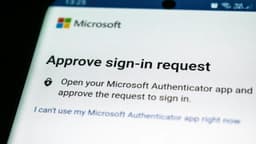How to Operate a Remote Customer Service Team
Remote work is increasingly popular for many companies. Managing a remote customer service team is essential for businesses. Operating such a team presents unique challenges and considerations. This article outlines strategies and best practices for successfully managing a remote customer service team.
The Importance of Communication and Collaboration
Effective communication and collaboration are vital for remote customer service teams. Without face-to-face interaction, it is important to establish clear communication channels and maintain regular contact.
Consider using cloud-based project management tools to facilitate communication. These tools create a centralized platform for collaboration, information sharing, and progress tracking. They ensure team members have access to the same information in real-time, regardless of location.
In addition, implement communication tools like instant messaging and video conferencing software. These tools enhance collaboration and foster connection among team members, enabling quick communication and updates.
Strategies for Managing Remote Customer Service Teams
What strategies can help you effectively manage a remote customer service team?
1. Provide Clear Expectations and Guidelines
Set clear expectations and guidelines for your remote customer service team. Communicate performance standards, response times, and customer service protocols to promote consistency and quality. Detailed guidelines help team members understand their roles and align with organizational goals.
2. Foster a Supportive and Engaging Environment
Remote work can feel isolating. Foster a supportive and engaging environment by encouraging regular check-ins and virtual team meetings. Organize virtual team-building activities to enhance bonding and morale.
3. Invest in Training and Development
Offer continuous training and development opportunities for your remote customer service team. Provide access to online courses and webinars for skill enhancement. Encourage knowledge sharing to create a culture of learning.
4. Implement Performance Monitoring and Feedback Systems
Performance monitoring and feedback are crucial for remote teams. Use systems that track key metrics like response times and customer satisfaction ratings. Regularly review performance and provide constructive feedback to help team members improve.
5. Prioritize Work-Life Balance
Promote a healthy work-life balance to prevent burnout. Encourage team members to maintain boundaries and practice self-care. Suggest regular breaks and time away from work to recharge.
6. Utilize Remote Support Tools
Incorporate remote support tools to improve efficiency. Tools such as remote desktop software, screen sharing applications, and customer support ticketing systems can streamline customer interactions and provide effective support.
Managing a remote customer service team requires planning, effective communication, and proper tools. Follow the best practices outlined here to successfully operate your team. By providing clear expectations, fostering a supportive environment, investing in training, monitoring performance, promoting work-life balance, and utilizing remote support tools, your team can deliver exceptional customer service from anywhere.












